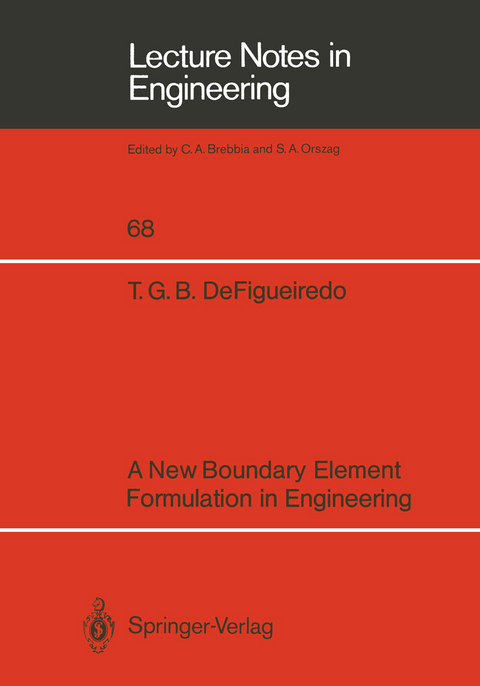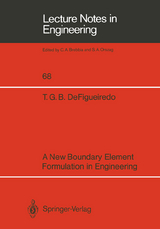A New Boundary Element Formulation in Engineering
1 Introduction.- 1.1 The Hybrid Displacement Boundary Element Model.- 1.2 Historical Development of Variational Principles.- 1.3 Variational Principles and Finite Element Models.- 1.4 Boundary Element Method Fundamentals.- 1.5 Boundary Element Variational Formulations.- 2 Potential Problems.- 2.1 Introduction.- 2.2 Indicial Notation.- 2.3 Basic Equations.- 2.4 Generalized Variational Principle.- 2.5 Derivation of the Model.- 2.6 Symmetry of the Stiffness Matrix.- 3 Numerical Aspects in Potential Problems.- 3.1 Introduction.- 3.2 The Constant Element.- 3.3 The Quadratic Element.- 3.4 The Vector B.- 4 Elastostatics.- 4.1 Introduction.- 4.2 Basic Relations in Linear Elastostatics.- 4.3 Modified Variational Principle.- 4.4 Derivation of the Model.- 5 Numerical Aspects in Elastostatics Problems.- 5.1 Introduction.- 5.2 The Constant Element.- 5.3 The Quadratic Element.- 5.4 Computation of the Submatrices Fii.- 5.5 Body Forces.- 6 Numerical Applications.- 6.1 Introduction.- 6.2 Examples for Potential Problems.- 6.3 Elasticity Problems.- 7 Conclusions.- 8 Bibliography.
| Erscheint lt. Verlag | 25.7.1991 |
|---|---|
| Reihe/Serie | Lecture Notes in Engineering |
| Zusatzinfo | IX, 198 p. |
| Verlagsort | Berlin |
| Sprache | englisch |
| Maße | 170 x 242 mm |
| Gewicht | 378 g |
| Themenwelt | Informatik ► Theorie / Studium ► Künstliche Intelligenz / Robotik |
| Mathematik / Informatik ► Mathematik ► Analysis | |
| Naturwissenschaften ► Chemie ► Physikalische Chemie | |
| Naturwissenschaften ► Physik / Astronomie ► Mechanik | |
| Technik ► Maschinenbau | |
| Schlagworte | boundary elements • Development • Numerical Methods • numerische Methoden • Randelement • Variational Principles • Variationsprinzip |
| ISBN-13 | 9783540540304 / 9783540540304 |
| Zustand | Neuware |
| Informationen gemäß Produktsicherheitsverordnung (GPSR) | |
| Haben Sie eine Frage zum Produkt? |
aus dem Bereich




